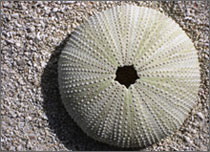 | 
#15 2007
We're In the Zone: Using Marine Spatial Planning
to Protect Sanctuary Resources
Following extensive work with the State of California, National Park Service, and other partners, eleven marine reserves and two marine conservation areas were established by 2007 within Channel Islands National Marine Sanctuary to provide long-term refuge to all marine life. This over 240-square nautical mile network of protected areas represents a historic achievement in marine conservation. Studies indicate that marine species within the reserve areas are responding favorably to the added protection.
Spatial planning tools, used to reduce wildlife disturbance, facilitate recovery of resources, and set aside areas for special use, are one of the often under-recognized strengths of the sanctuary system. It is not alone among protected areas programs in using zones, but has always been on the leading edge. Zoning was used as early as 1983 in Looe Key National Marine Sanctuary, but was put to far greater use in ensuing years. For example, in 1997, Florida Keys National Marine Sanctuary implemented the nation’s first comprehensive marine zoning plan and in 2001, added the Tortugas Ecological Reserve, one of the nation’s largest fully protected marine reserves.
|
|
As our population grows and economy recovers, there are more and more demands being placed on our ocean for food, energy, medicine, and recreation. Marine spatial tools are important components in helping to protect and manage an increasingly crowded ocean. Learn more about this forward-thinking management approach.

More about marine reserve networks
More about zones in Florida Keys
|
|

